Project & Design
Design
Clessidri
I have always appreciated farfalle for their simplicity, which comes from an elementary gesture. However, what has always fascinated me is the natural invitation their shape expresses, explicitly indicating that it should be held at the center. No other pasta shape enhances this relationship with the extension of our arm—the fork—as the farfalle does. A simple gesture, yet it also allows, in popular perception, to judge the cooking of the farfalla.
I found it appealing to take this principle as the starting point for my research. Could it be possible to translate this gesture into a pasta shape that provides a different experience from the farfalle?
Although I enjoy tomato sauce, I often prefer other pastas better suited to the dishes I cook. There are some I particularly like: the Malloreddus. These Sardinian gnocchetti capture sauce with astonishing ease, much like most extruded pasta. Their artisanal production method, using a ridged board, was also an inspiration for my research.
So I studied a shape that could be easily extruded and produced using current technologies, while keeping in mind, like the Malloreddus, that the pasta could also be crafted by hand. In this case, using two fingers shaping the dough on a board designed for that purpose.
When designing the Clessidri, I envisioned a gentle curve that coils onto itself, simultaneously translating the invitation inspired by the farfalle. A feminine silhouette, both subtle and determined, which pairs with the sauce in two opposite cavities. As the protagonist of the dish it composes, its ridged architecture will retain its structure and give full character to the plate, while maintaining a visual flexibility suitable for combining different ingredients, both hot and cold.
While the name obviously suggests its archetypal shape, it also evokes the relationship pasta has with time. For a clepsydra is nothing other than the guardian of a time that never ceases to flow.
So, how many minutes will pass before the Clessidri are cooked?
Année / 2021
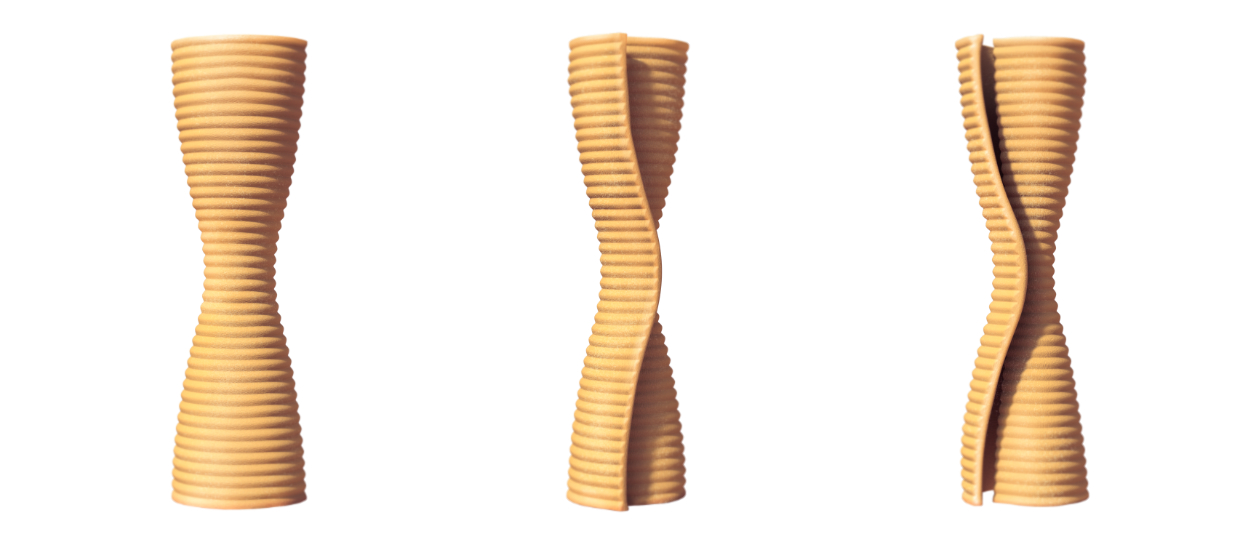
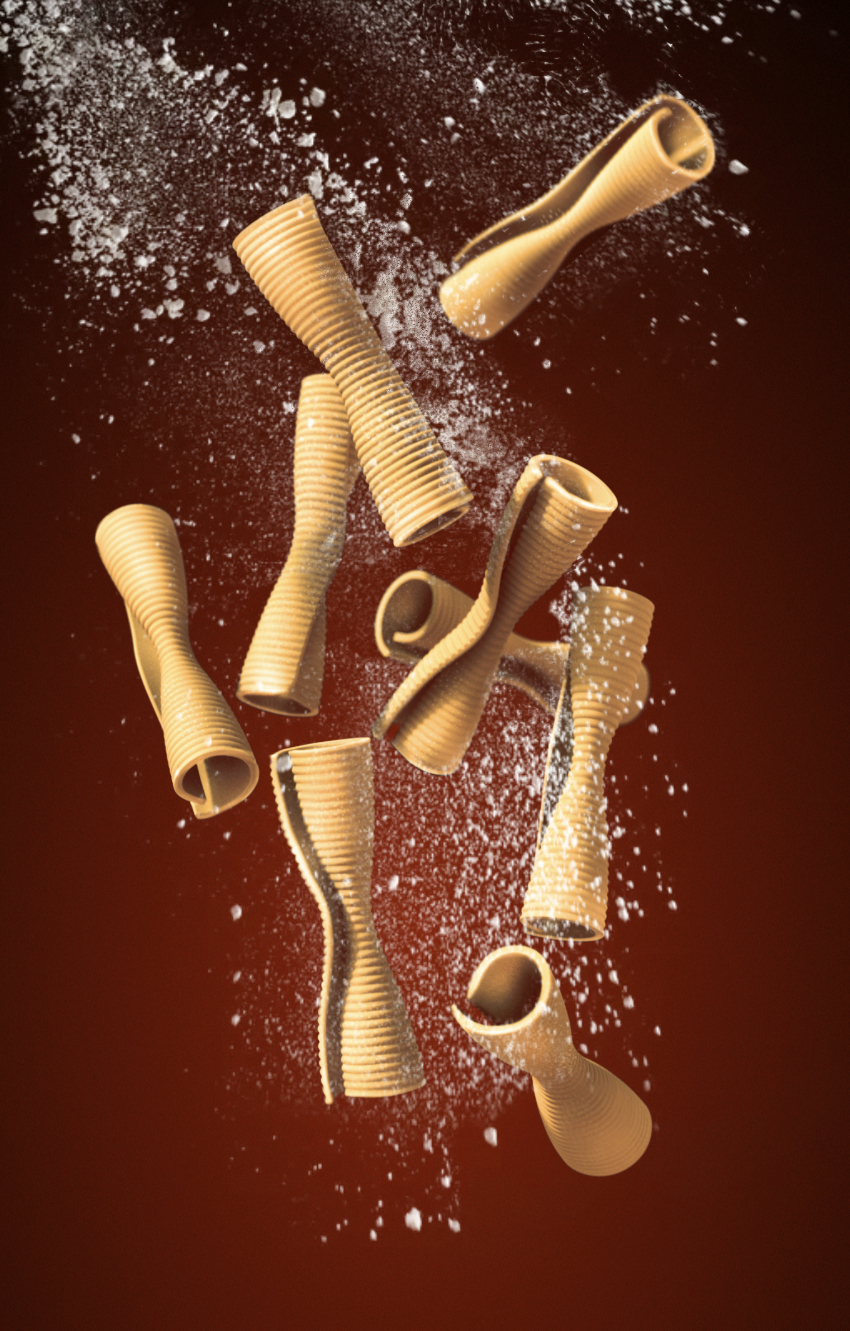
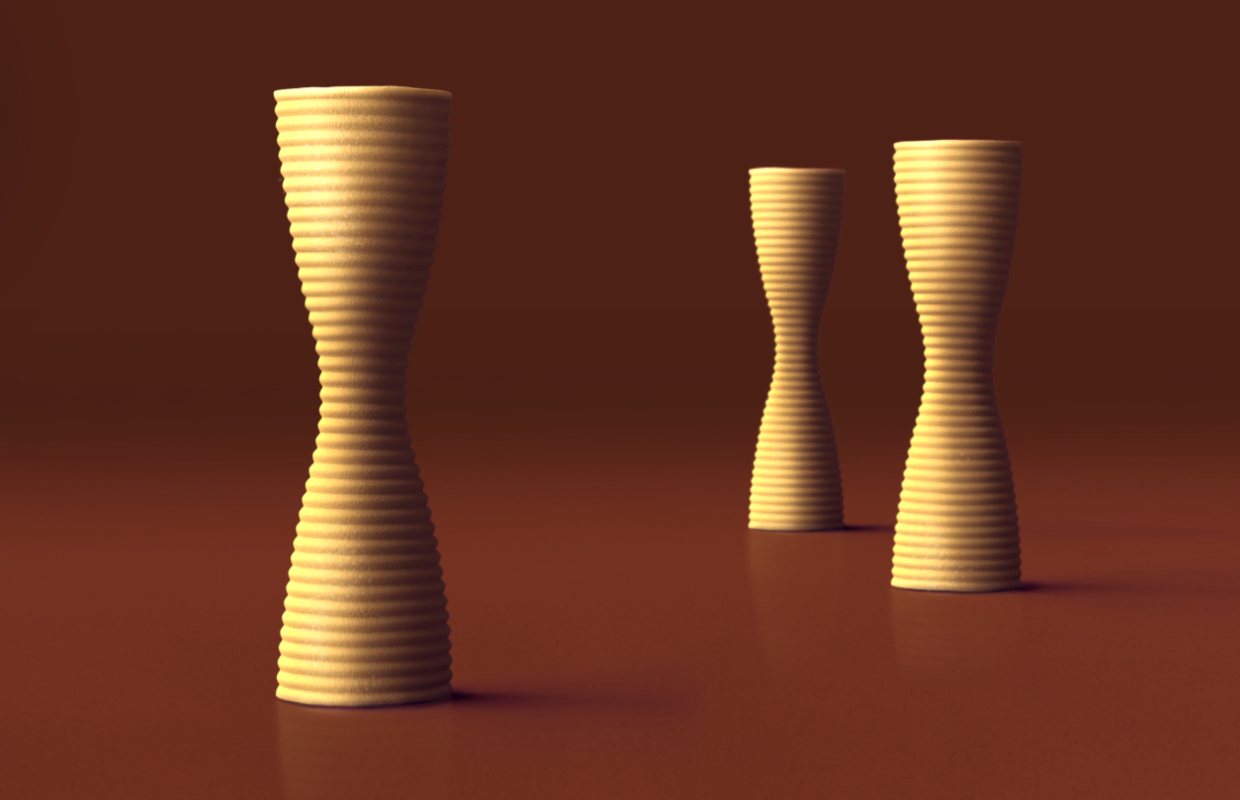
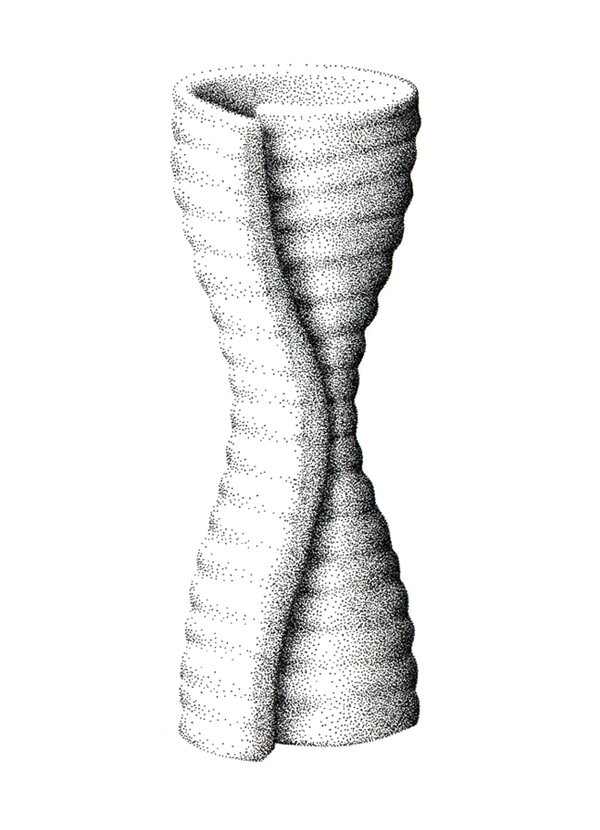
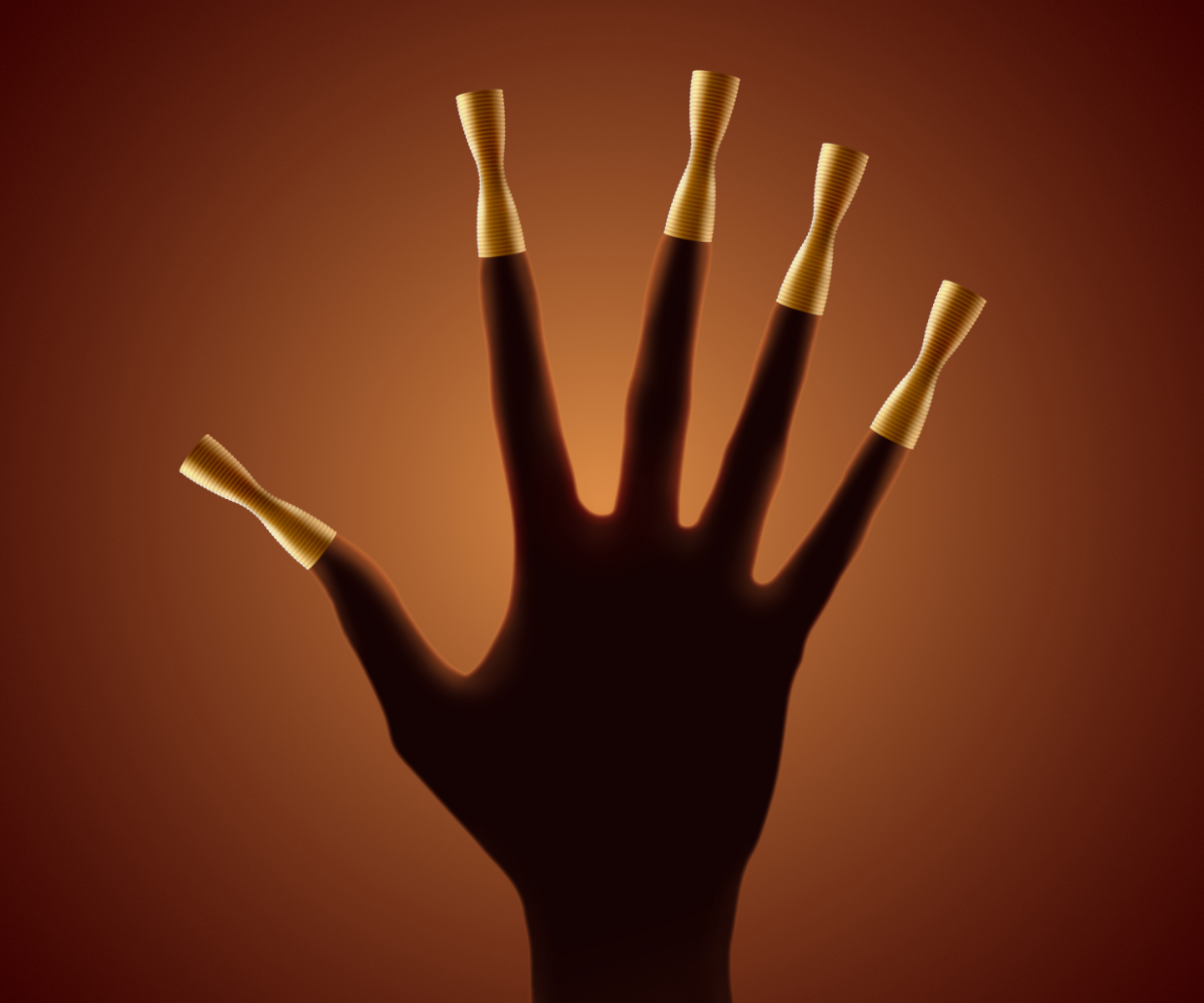

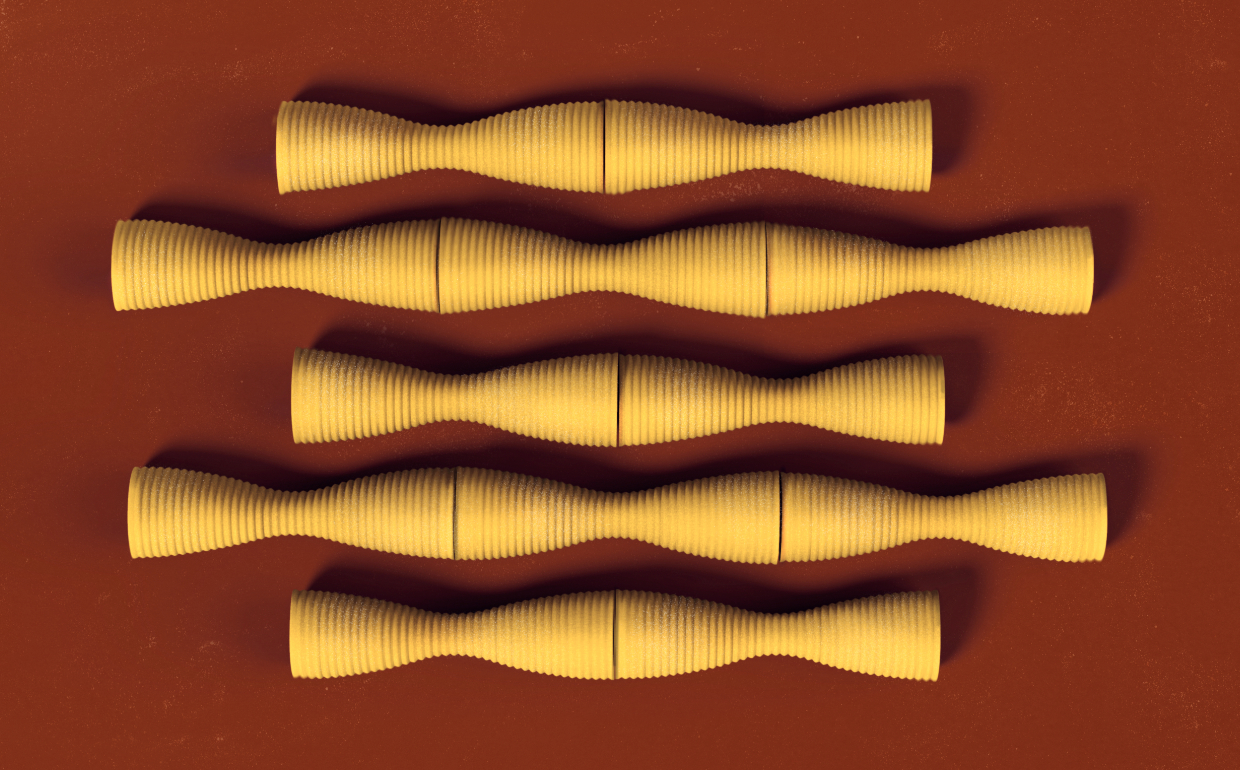
Year / 2021






